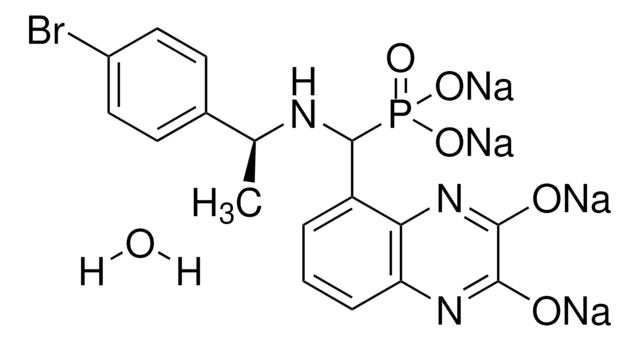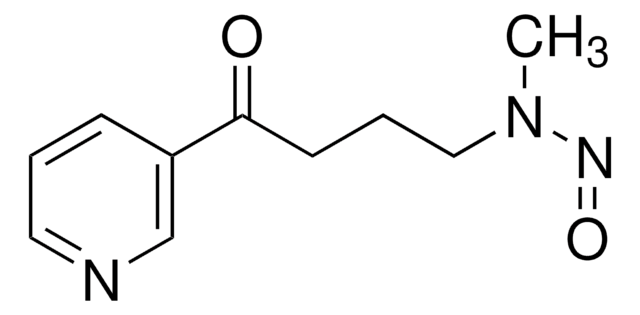I2892
Ifenprodil (+)-tartrate salt
Synonym(s):
α-(4-Hydroxyphenyl)-β-methyl-4-benzyl-1-piperidineethanol (+)-tartrate salt
About This Item
Recommended Products
storage temp.
room temp
Quality Level
SMILES string
OC(C(O)C(O)=O)C(O)=O.CC(C(O)c1ccc(O)cc1)N2CCC(CC2)Cc3ccccc3.CC(C(O)c4ccc(O)cc4)N5CCC(CC5)Cc6ccccc6
InChI
1S/2C21H27NO2.C4H6O6/c2*1-16(21(24)19-7-9-20(23)10-8-19)22-13-11-18(12-14-22)15-17-5-3-2-4-6-17;5-1(3(7)8)2(6)4(9)10/h2*2-10,16,18,21,23-24H,11-15H2,1H3;1-2,5-6H,(H,7,8)(H,9,10)
InChI key
DMPRDSPPYMZQBT-UHFFFAOYSA-N
Gene Information
human ... GRIN1(2902) , GRIN2A(2903) , GRIN2B(2904) , GRIN2C(2905) , GRIN2D(2906) , GRINA(2907)
General description
Application
- to test the action in a KCl-induced cortical spreading depression (CSD) animal
- to study its effects on electrophysiological properties and spontaneous spikes in neocortical pyramidal cells
- to investigate its therapeutic effects
Biochem/physiol Actions
Features and Benefits
Storage Class Code
11 - Combustible Solids
WGK
WGK 3
Flash Point(F)
Not applicable
Flash Point(C)
Not applicable
Personal Protective Equipment
Certificates of Analysis (COA)
Search for Certificates of Analysis (COA) by entering the products Lot/Batch Number. Lot and Batch Numbers can be found on a product’s label following the words ‘Lot’ or ‘Batch’.
Already Own This Product?
Find documentation for the products that you have recently purchased in the Document Library.
Customers Also Viewed
Our team of scientists has experience in all areas of research including Life Science, Material Science, Chemical Synthesis, Chromatography, Analytical and many others.
Contact Technical Service








